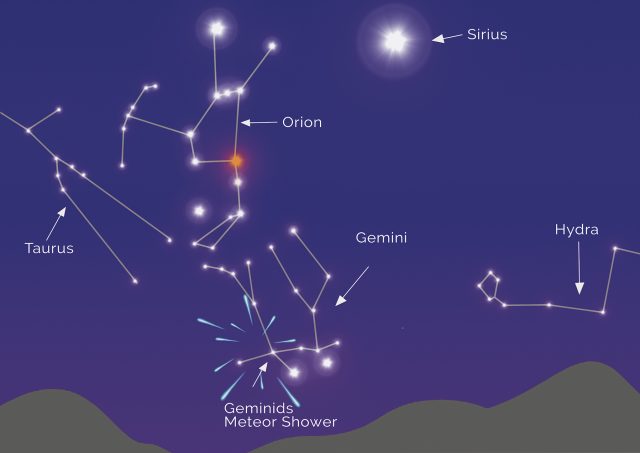This month, stargazers will be treated to a special display from the Geminids Meteor Shower. On a dark night, away from artificial light pollution, you might see up to 120 meteors (or “shooting stars”) an hour!
Meteors are caused by debris entering Earth’s atmosphere. The debris can be as small as a grain of sand which burns up in the atmosphere and causes a bright streak of light to appear briefly in our night sky. The debris that causes a meteor can be travelling between 11 to 73 km/second.
A meteor shower is a time when you see lots of “shooting stars”. They are the result of Earth passing through the trail of debris left by a comet or other object that has come into our Solar System and orbited around the Sun.
The Geminids Meteor Shower is generated from asteroid 3200 Phaethon and is one of the most active and best meteor showers to see. This year, the peak of the Geminids Meteor Shower coincides with a moonless night which makes it easier for viewing.
Enjoy the fabulous and fiery views. It should be cosmically spectacular!
When and where to look: The best time to watch is after midnight on 13 and 14 December. Look to the north east and north about 45 degrees above the horizon.
Something Interesting:
Since the asteroid’s discovery on 11 October 1983, by NASA’s Infrared Astronomical Satellite (IRAS), 3200 Phaethon has gone around the sun nearly 24 times. Phaethon is 5.10 km across and is one of the largest near-Earth asteroids classified as “potentially hazardous” by NASA. Astronomers have closely monitored this asteroid and there is no high threat level in the foreseeable future.
Astrotourism WA may be visiting a town near you. Find out about events and what’s up in the night sky at www.astrotourismwa.com.au








